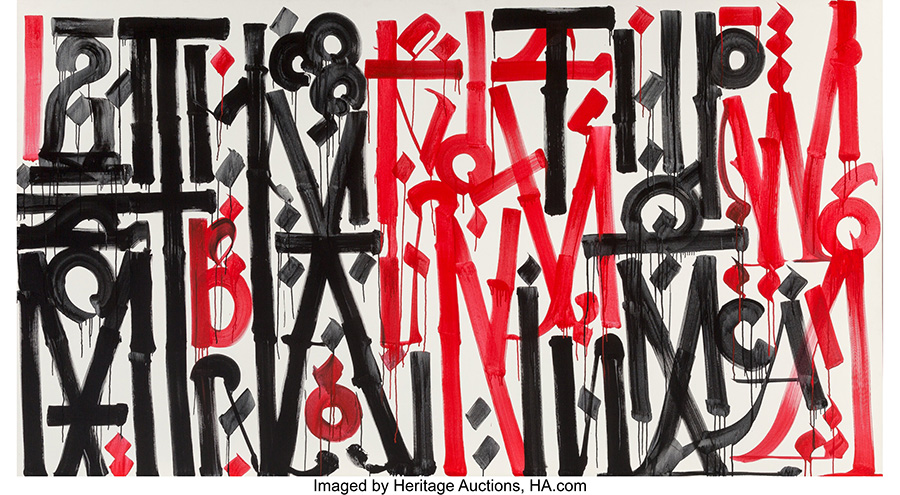SAVE TIME AND HEADACHES BY MASTERING THE ART OF INVENTORY CONTROL
By James Halperin and Greg Rohan
We once appraised a home with six federal mahogany chests of drawers. The deceased’s estate plan stipulated that a certain heir should receive “the good one.” While the collector certainly understood which of the six was “the good one,” he was not there to help – and the executor and attorney had no idea what he was talking about.
In another case involving a room full of paintings, the estate plan provided instructions for a certain painting: “the one with the banana.” The heirs, executor and attorney all looked to us to determine which painting represented a banana. Unfortunately, it was impossible to find any resemblance in the group because all of the pieces were entirely abstract.
These situations sound like vaudeville skits, but both really happened, and they could have been avoided if the collections had been inventoried and numbered. Even when the terms of the will specify the exact location of an item in an effort to distinguish it from similar ones, it may not be enough. As collectors relocate, downsize or simply rearrange their homes, the location of an item may change. Assigning a unique identification number does not change and therefore remains the only reliable method that we recommend for inventorying items.
Documenting what you own by writing it down by hand or in a printable listing is the most fundamental part of intelligent collections management. For historians and scholars, original handwritten inventories have proved to be invaluable tools with tasks as varied as accurately restoring a historic building, understanding a major battle or reconstructing a seminal art collection. The oldest known examples of writing in Europe are lists of commodities found in the storerooms of palaces in ancient Greece. Modern technology has made the process easier than ever, and all collectors must understand the importance of proper documentation: It will be essential to your relationships with insurers, dealers, auction houses, the IRS and your heirs. Inputting and documenting each new acquisition as you proceed makes this process manageable.
While it’s possible to maintain meticulous paper records, our preference is that you use a computer program that is properly backed up in case of computer issues by a simple Excel spreadsheet, a Quicken list, a personal website, handwritten note cards, the MyCollection™ feature on the Heritage Auctions website or even some private software options like Collectify®. Heritage’s free MyCollection™ feature is particularly useful for coin and comic collectors because you can quickly see market values for your pieces.
Enlarge

While doing anything at all will put you far ahead of most collectors, the more detailed, uniform and decipherable your inventory method is to the novice eye, the better. Your inventory system must be self-explanatory because you may not be there to explain it. Highly specialized jargon, abbreviations and personal notation codes should be avoided.
Different types of collectible property require different information fields, but a general checklist might appear as follows:
- Object Type: What is it?
- Title: Does it have a known or descriptive title?
- Maker: Is the creator known?
- Medium: What’s it made of?
- Size: What are its dimensions and/or weight?
- Inscriptions: Is anything written on it?
- Signature: Did the maker sign it? Where and how?
- Subject: Is there a representation on the item?
- Date: When was it made?
- Manner of Acquisition: How did you obtain it? (Auction, yard sale, etc.)
- Cost and Date of Acquisition: What did you pay for it? When did you buy it?
- Location: Where is the item? A safe deposit box, file cabinet, on loan to a local museum? Specifics are important. For example, if a painting is in the living room above the sofa, note the location and the date the information was entered.
- Provenance: What is the item’s history of ownership?
- Special Notes: Is there anything else you would want an heir to know about the item? More information is always better. For example, has it been exhibited or published in a catalog?
- Photographs: Take a picture of each item in your collection.
- File Folder: Keep or scan copies of all relevant documentation: invoices, auction catalog entries, bills of lading, etc.
- Inventory Number: See below.
The Art of Inventory Control: Tying It All Together
Even the most accurate inventory documentation can end up useless if it is not “tied” to actual objects. Tying data to an object involves giving each item a unique inventory number with which it is tagged or marked, and then cross-referencing that tag with the written inventory entry and a photograph.
A useful collection inventory number system should begin with the year of acquisition, followed by an individual item number. For instance, 2022.001 would be reserved for the first piece acquired in the year 2022. This is the inventorying system used by museums, and with good reason, since it is both predictable and easy to follow.
It is critical that the object, photograph, number tag and master inventory do not become separated. String tags and sticker labels often are used when safe to apply, and they can be removed easily; of course, this is easier with some objects than others. Museums generally look for a part of the object that is out of sight when on display – usually the bottom or back – and put down a small strip of varnish. After it dries, the ID number is written in ink, and when that dries, another coat of varnish is placed over the number. For paintings, only the back stretchers or frames should be marked with the work’s unique ID number. Each type of property presents its own numbering challenges. Often, the only solution is to tag the box or plastic sleeve in which an object is stored, but this is not ideal since boxes and sleeves can be switched. Today, bar code technology, microchips and even radioactive isotope staining have enhanced our tagging options. Do your research to see what’s out there and what’s best for your particular collection. Ask dealers who specialize in the category, and seek out the advice of societies that serve collectors. Find out what the best practices are for each category you collect. A key principal is that a tagging or numbering system should never damage an item.
When photographing an object, write its unique ID number on a piece of paper and place it in the picture field so that the photograph actually displays the object and the number. That way, any loose photograph can be easily identified. Most large collections contain near-identical or duplicate items that, to the untrained eye, may appear indistinguishable from one another, even though values can vary widely. Many coin collections have been spent by heirs who were unaware that the coins had value to collectors, and this fate could be avoided with proper identification. You will thank yourself in the long run, as will everyone involved!
Finally, maintain a second copy of your complete inventory, including photographs, in a different location from the collection itself. Safe deposit boxes in banks are recommended, and it is also a good idea to have an electronic copy stored on a backup disc and/or online.
When you sell or otherwise remove an item from your collection, make certain that it is noted clearly in your inventory – unless, of course, you despise your heirs and wish to send them on a decades-long hunt for a valuable object you sold 20 years ago.
This article is excerpted from The Collector’s Handbook: Tax Planning, Strategy and Estate Advice for Collectors and Their Heirs.
 JAMES HALPERIN is Co-Chairman and Co-Founder of Heritage Auctions.
JAMES HALPERIN is Co-Chairman and Co-Founder of Heritage Auctions. GREG ROHAN is President of Heritage Auctions.
GREG ROHAN is President of Heritage Auctions.

